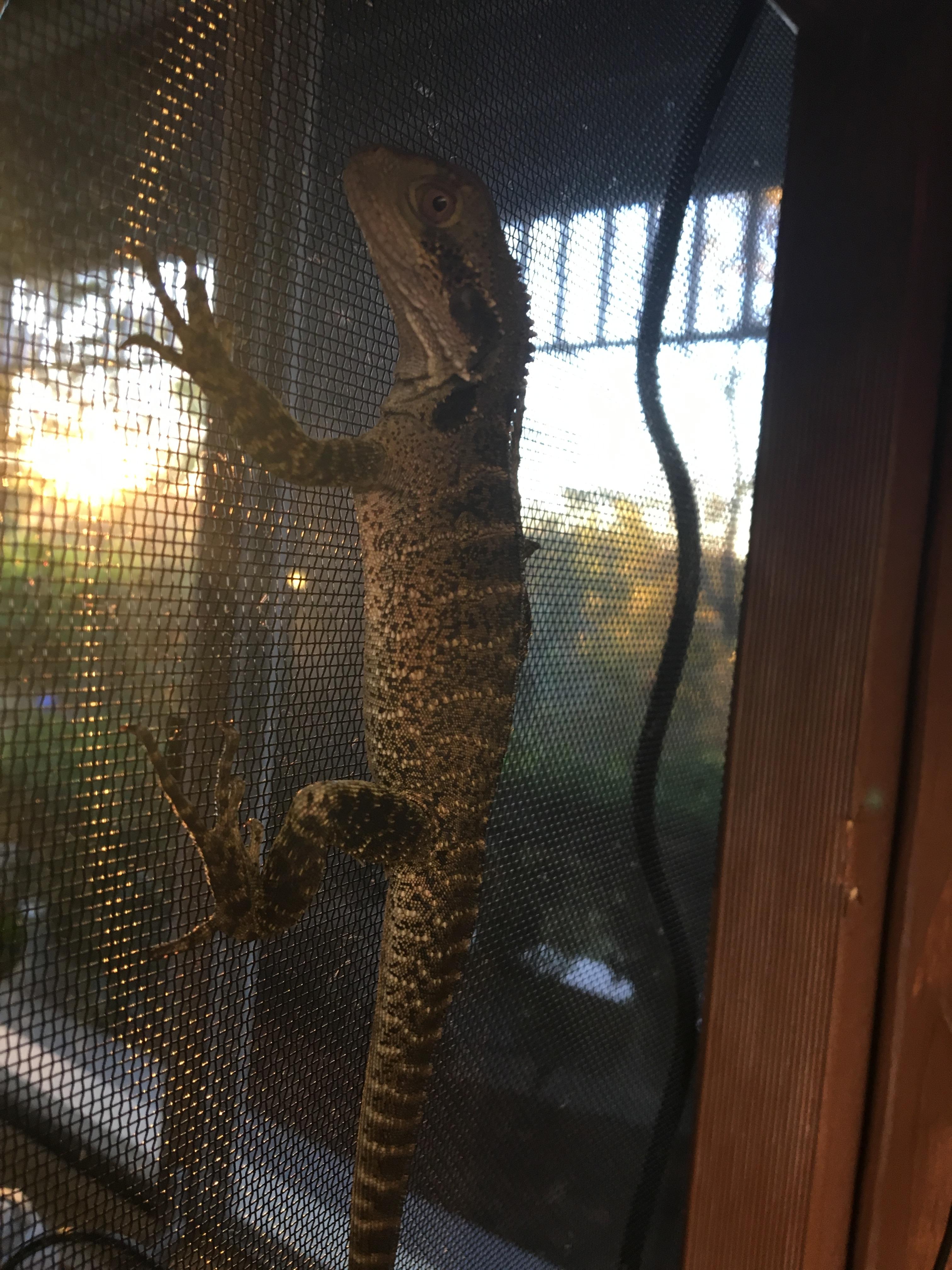Forcing an animal to be handled when it clearly doesn't want it is usually counterproductive. It just makes the animal more scared. The animal tries to get away, you forcefully restrain it with your hand, the animal sees you as a terrifying big monster. When it finally 'gets away' (when you put it down) it thinks it somehow managed to escape. Eventually it might realise that this keeps happening and it never gets eaten, but it's still not a positive interaction and at best it'll dislike you but tolerate something it sees as terrifying, or it might just always be terrified and stressed and always interact poorly with you.
Something like a water dragon is pretty easy to tame. Don't force them to do anything they're scared of. Even wild water dragons which get familiar with people often become very tame, and this never happens by people repeatedly catching and handling them. It happens because people walk around near them paying no attention to them. Rather than being monsters which try to grab them, they're just innocuous large animals which aren't interested in them, so the lizards are relaxed around these familiar, harmless creatures. If people throw feed to them, they come to like people, and I've had wild water dragons in parks etc come right up to me, even climb on me when I give them feed. If I was to grab one of these water dragons and force it to be handled, it would be less likely to come up to me the next day, not more. If you were to gradually build up to it, perhaps by very gently touching the lizard when feeding it, it would become comfortable, then you can touch it more, then eventually build your way up to holding it as it becomes more and more comfortable (this may take weeks or even months). If you try to start from the other end and handle it from the beginning while it is scared, you're probably going to be counterproductive. Sometimes it will work, sometimes not, but gradually building up and never going far enough to scare the animal almost always works better.




